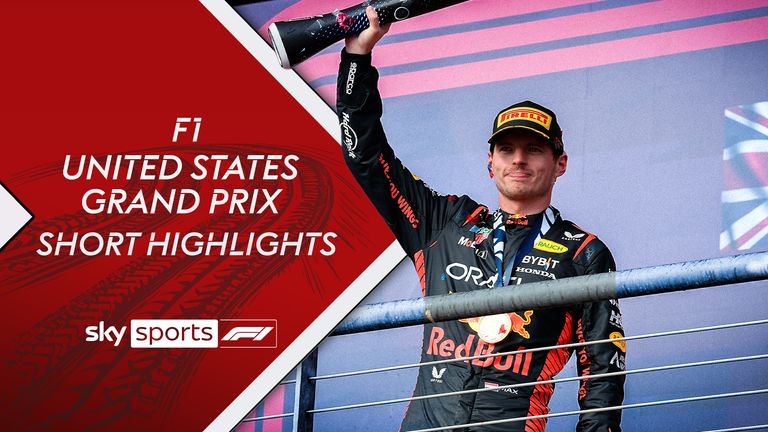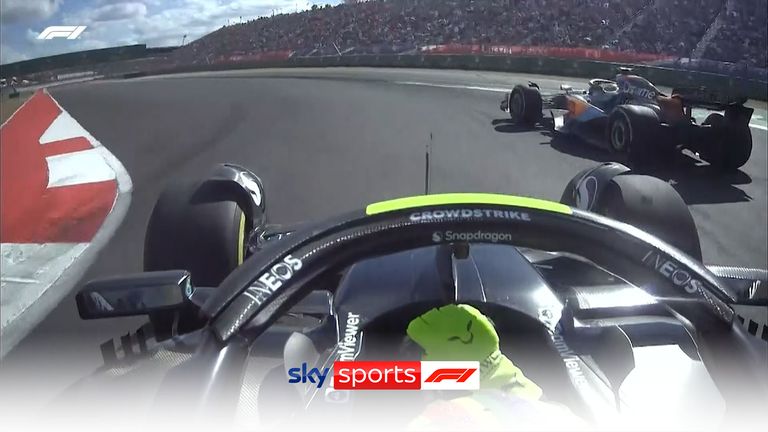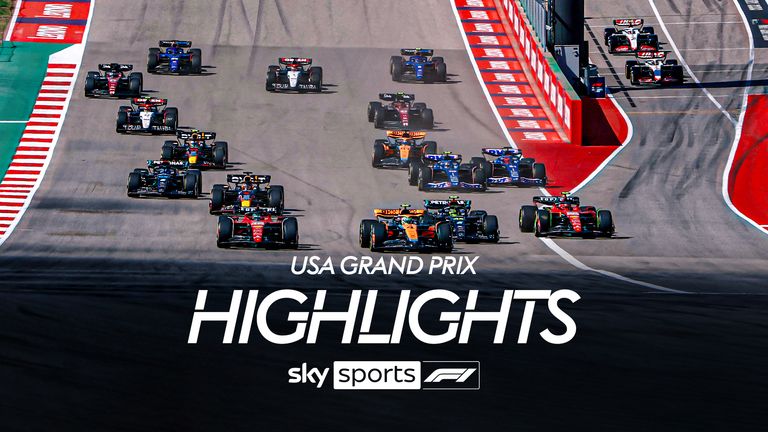Mercedes say they will “go away and learn from this” after Lewis Hamilton’s disqualification due to a technical infringement on his car lost him what had been a stirring second-place finish in the United States Grand Prix.
Hamilton and Ferrari’s Charles Leclerc were excluded from second and sixth places respectively four hours after the end of Sunday’s dramatic race after wear levels on the planks underneath their cars were found to have exceeded limits set out in F1’s regulations.
“We are of course naturally very disappointed to lose our podium finish,” said Mercedes’ trackside engineering director Andrew Shovlin.
“Unfortunately, it is one of the pitfalls of the sprint format where we have a solitary hour of running before parc ferme.
“Without running at a race fuel load in FP1, combined with a circuit as bumpy as this and the parts of the track where the drivers have to put the car during the Grand Prix, have contributed to the higher than expected wear levels.
“We will go away and learn from this but also take the positives from our experience as a whole.”
Meanwhile, Hamilton and Leclerc on Monday joined forces for a collaboration post on their Instagram accounts.
The post, originally created on Hamilton’s account, featured a picture of them looking glum while sitting next to each during a press conference from the Austin weekend, and the single-word caption: “mood.”
Disqualifications Q&A: Answering some of the key questions
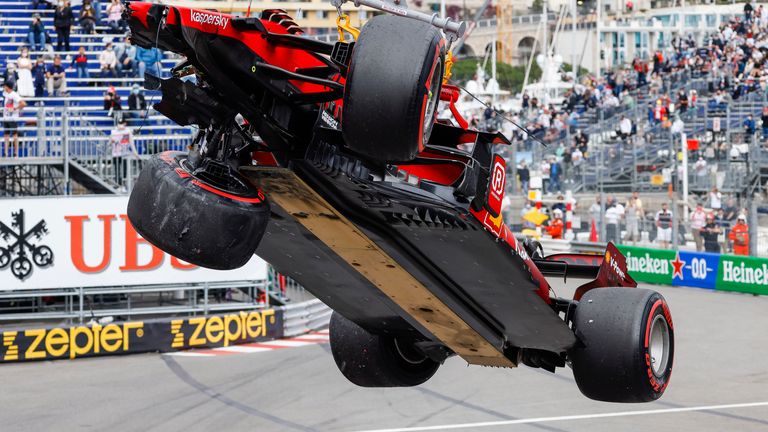
A look at the underside of Charles Leclerc’s Ferrari back at the 2021 Monaco GP as it was winched away following a crash
So F1 cars have a plank underneath them?
Among perhaps the most-Googled questions about F1 cars, yes, they do have a plank on the underside of the chassis. Although they are not ‘wooden’ anymore.
It is a safety measure to regulate ride height and ensure cars do not run too close to the ground.
Of course, being F1, while wood laminate was used when they were first introduced, the material that teams use these days is actually a rather more complex structure featuring glass-reinforced resin.
The plank was first mandated on cars in 1994 as part of a number of safety measures introduced mid-way through that season after the tragic events of Imola, when Ayrton Senna and Roland Ratzenberger died in accidents, and has remained in the technical regulations since.
The regulations state that “the thickness of the plank assembly measured normal to the lower surface must be 10mm ± 0.2mm and must be uniform when new” and that “a minimum thickness of 9mm will be accepted due to wear”. It is the latter rule which Mercedes and Ferrari fell foul of.
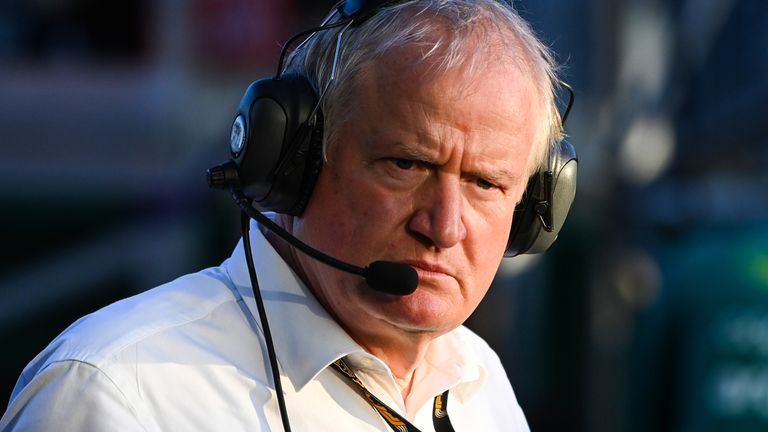
Jo Bauer, the FIA’s long-standing technical delegate
When were Hamilton and Leclerc’s cars checked?
The issues with Hamilton and Leclerc’s cars came to light during the regular post-race scrutineering of cars in the pit lane in Austin, which is carried out after every race.
Conducted by the FIA technical delegate Jo Bauer, the list of checks carried out in conformity with the sport’s rulebook ran to four pages in a document issued by the governing body on Sunday night.
Some of the array of checks are carried out on all classified finishing cars – such as weight, fuel-flow meters, tyres, and various hybrid power unit limits – while other inspections are carried out on some cars on a random basis from race to race.
For instance, on Sunday, three cars (Perez, Norris and Tsunoda) were selected for checks on their respective aerodynamics and bodywork, which all passed.
Four cars were inspected for physical floor and plank wear, which is where Mercedes and Ferrari ran into their problems. While two cars, Max Verstappen’s Red Bull and Lando Norris’ McLaren, were found to be within the accepted limits, the Mercedes and Ferrari were not.
The matter was then referred to the stewards and, from there, things were only going one way.
But while the post-race parc ferme checks are long-established practice, questions have been raised since the disqualifications in some quarters as to why all cars aren’t checked for their plank wear and why the testing isn’t widened to include more cars if some – in this case half of those tested – are found to be non-compliant.
Sky F1’s Bernie Collins posted on X:
The reality is that the time and logistics which would be required to test every single aspect of every single car on every single race weekend makes such a scenario prohibitive, hence the threat of random checks on certain areas instead.
Would the plank wear have given any performance advantage?
Any lap-time advantage or disadvantage cannot be quantified and, in any case, any such debate is fairly irrelevant in this matter.
Whatever potential mitigating circumstances there may be at play in situations such as this where the technical regulations have been breached on a car, there is a zero-tolerance approach from the FIA and so a slam-dunk disqualification from the results is almost always the outcome.
So, knowing this to be the case, running any risk of falling foul of the plank-wear regulations is clearly something neither Mercedes nor Ferrari would have wanted. Indeed, there was also no suggestion from the stewards that either team meant to break the rules.
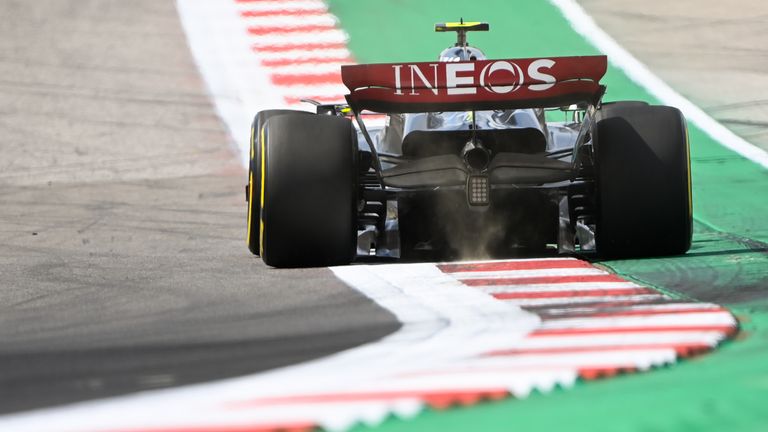
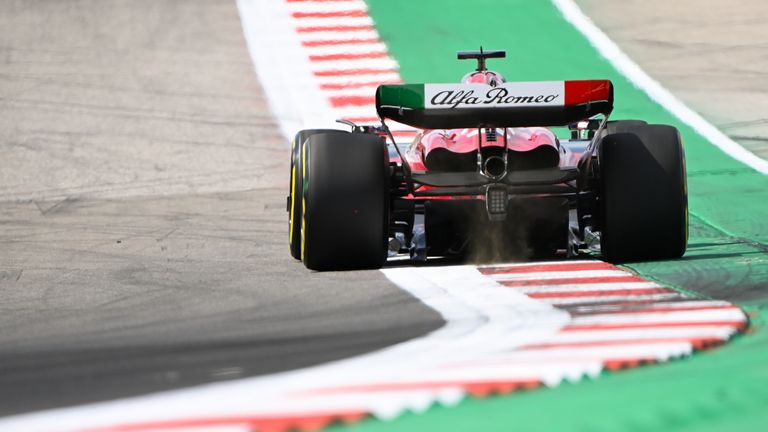
Rather, as the teams admitted, the variances of a Sprint weekend when set-up time is severely limited, and the fact the CoTA track was especially bumpy, meant they simply got caught out, hence why neither are appealing the decision.
“As a matter of fact it turned out we were too marginal and also because of the wind that turned direction and had a stronger intensity than forecast, this brought our car to not be legal in the end,” said Ferrari sporting director Diego Ioverno.
“With hindsight, rewinding the weekend, we may have lifted even more the car, but would have lost performance and we are here to optimise our own performance.”
What’s the wider consequence of the double DSQs in the championships?
1. Hamilton’s lost points give Perez unexpected breathing room
For a few hours in the immediate aftermath of Sunday’s race, Hamilton was sitting just 19 points behind Sergio Perez in the standings and his hopes of overhauling the under-pressure Red Bull driver over the season’s final four races appeared eminently achievable.
But the Mercedes driver’s exclusion suddenly produced a 20-point swing back in Perez’s favour, with his rival losing 18 points for second and the Mexican himself also gaining an additional two points by moving up a place in the revised classification from fifth to fourth.
Thirty-nine points with four races left looks a more formidable lead for Perez now as champions Red Bull aim to close out their first-ever Drivers’ Championship one-two.
2. Ferrari peg back Mercedes for second in constructors’
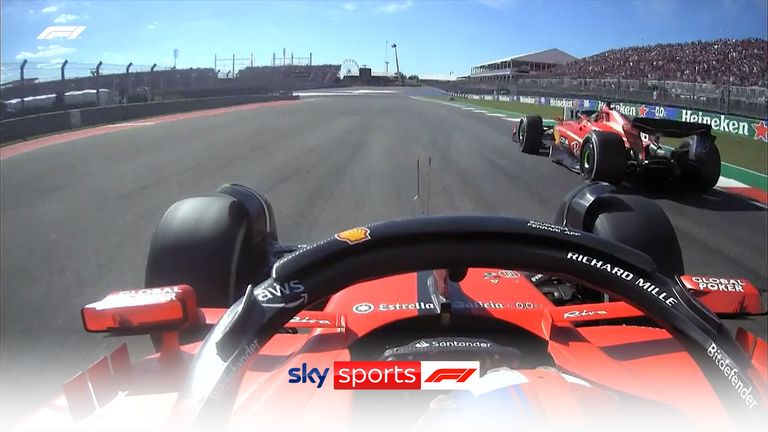
Charles Leclerc expressed his frustration in Austin after following team orders to let through Ferrari team-mate Carlos Sainz, with Leclerc also later being disqualified for excessive wear on the underfloor skid blocks of his car
Although Mercedes and Ferrari each lost one car from the final results, the fact that Carlos Sainz finished two places ahead of George Russell in the other cars meant that in the end, it was the Scuderia who scored more points across the Austin weekend despite their rivals’ superior race pace and victory near-miss.
Ferrari took six points back on Mercedes, reducing their deficit to 22 points.
3. Norris gains further ground to move into Ferrari, Alonso territory
The disqualifications had two-fold significance for Lando Norris.
In terms of the race, he inherited the runner-up finish from Hamilton to match his career-best result for the fifth time this year.
In terms of his fast-improving championship position, the three extra points picked up for second combined with Leclerc’s total loss of points meant Norris moved ahead of his Ferrari rival and into the top six of the standings for the first time in 2023.
Furthermore, he is now only 24 points behind fourth-placed Fernando Alonso, who retired from the race and didn’t score all Sprint weekend in Austin. Sainz is 12 points away in fifth.
4. Crucial points boosts for Williams and AlphaTauri
The big winners of the day though were Williams who saw the double disqualification turn what had been zero points into three. Although that haul might not seem much in the grand scheme of things, it is still 12 per cent of their whole season total and consolidates the team’s grip on seventh place in the standings ahead of Alfa Romeo.
Scoring a first F1 point in 10th – and at his home race, no less – is also likely to be a timely morale boost for Logan Sargeant, who is the only driver on the current grid without a contract for 2024.
AlphaTauri, meanwhile, saw their points in the race go from two (10th and fastest lap) to five (eighth and fastest lap) and double their total for the whole season. It now gives them renewed hope of getting off the bottom of the table over the final four races of the season given they are now just two points behind Haas.
F1 heads straight to Mexico for the middle leg of the Americas triple header. Watch the whole Mexico City Grand Prix weekend live on Sky Sports F1 from Friday, with Sunday’s race at 8pm. Stream F1 on Sky Sports with NOW


